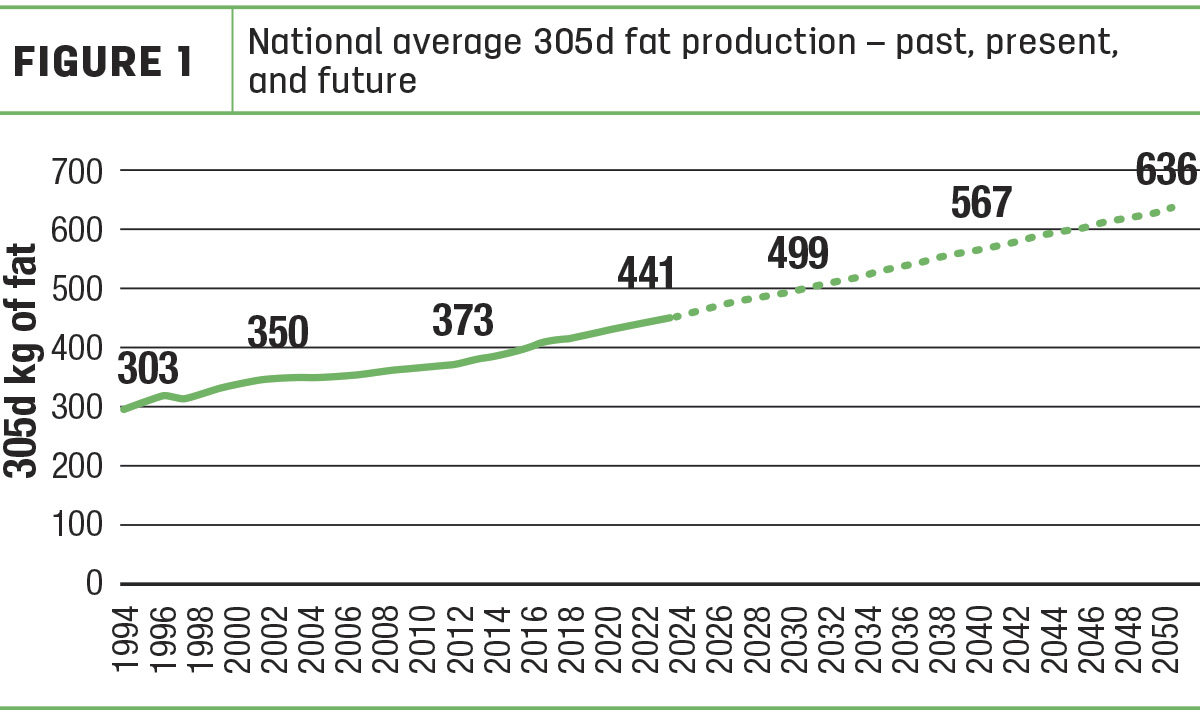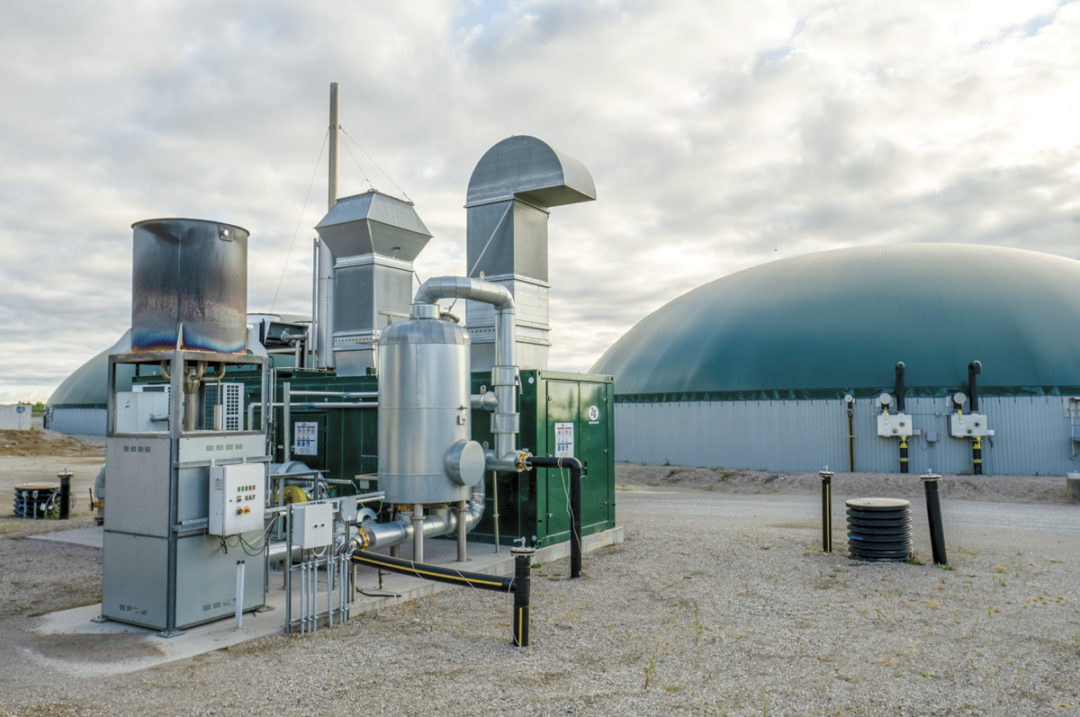To read this article in French, click here.
The Dairy Farmers of Canada's (DFC) target to achieve net-zero greenhouse gas (GHG) emissions by 2050 is not a recent development. This objective has sparked queries from producers who initially felt unprepared and uncertain about how to achieve it. Many found it challenging to comprehend what the goal entailed.
Nevertheless, it is not a reason to cause panic; there is promising research and a dedicated effort to assist farmers in recognizing the obstacles and possibilities of reducing GHG emissions. Recently, DFC published the Best Management Practices Guide to Mitigate Emissions on Dairy Farms, which clarifies the paths to reach net zero. For some, it may even be an opportunity to explore alternatives to your business.
What does the net-zero goal mean?
To reach net zero, the dairy industry must greatly cut GHG emissions in production and use initiatives to remove carbon and other gases from the atmosphere. The net-zero status is achieved when emissions are completely offset by carbon removal.
Three primary sources of emissions on a dairy farm
- Enteric fermentation – This occurs during the natural fermentation process in the cow's rumen, resulting in the production of methane. This process is unavoidable and inherent to biological systems. There are multiple efforts studying alternatives to help reduce it, such as feed additives and nutritional strategies. The genetic evaluation available in Canada is another alternative that will help.
- Manure management – Manure can lead to the generation of methane and nitrous oxide if not properly handled. Manure can produce these gases while decomposing in lagoons or pits or when applied to fields as fertilizer without appropriate treatment. Different strategies and practices can drastically reduce emissions and potentially enhance the fertilizer potential of your manure.
- Fossil fuels – Dairy farms rely on electricity, tools, vehicles, heating and equipment fueled by gas or diesel. When these fuels are burned, they produce CO2 emissions. Machines used for feed production and power generation (hydro) are the most significant contributors to emissions on a dairy farm. Over the next years, we can expect to have more alternative sources of electricity at affordable cost, as well as machines and vehicles that are more efficient and/or powered by alternative sources.
How is the dairy industry reducing emissions?
Even if you are not actively reducing emissions, your farm has likely become more efficient over time by increasing crop yields and production per cow, resulting in a reduced carbon footprint per glass of milk.
As a global leader in the dairy industry, Canada has made significant progress in reducing emissions over the past 20 years, primarily by improving production efficiency – about a 25% reduction in milk carbon footprint in that period. Projecting similar efficiency gains for the next 25 years, we will come a long way, but further efforts are needed to achieve the net-zero goal. While production gains will continue, a broader and more energetic role is necessary to achieve the goal – and the DFC guide provides valuable information on reducing emissions and offsetting them by removing carbon from the atmosphere.
To illustrate the production gains made, Figure 1 shows the progress made in the amount of fat produced per 305-day lactation and estimates future gains up to 2050 based on the advancements of the past 10 years. If this trend continues, our cows are expected to produce around 500 kilograms of fat by 2030, 567 kilograms by 2040 and 636 kilograms by 2050. This would represent a 44% increase from current levels (441 kilograms per 305-day lactation)!

Tapping into new opportunities
Achieving net-zero status involves balancing the amount of gases produced and removed at the farm, and there isn’t a set formula. There are various approaches to achieve this, including the adoption of renewable energy sources such as solar, wind and biogas. They can fulfill the farm's power requirements and enable them to sell surplus energy to utility companies, thereby creating an additional income stream. Alternatively, the installation of biodigesters (anaerobic digesters) can significantly reduce emissions from manure while also generating biogas and high-quality fertilizer. The biogas itself can be used to generate electricity or heat, as vehicle fuel or as cooking gas.
Although biodigesters require significant investment and maintenance, they are a viable option for larger farms or groups of farms (dairy or non-dairy). There’s also the possibility of partnerships with entities outside of the industry, since they can process organic waste produced by humans (food waste). There are many successful biodigester initiatives across the country, offering encouraging examples of how this technology can be utilized – for example, Stanton Farms. With the high investment comes a large reduction in emissions, hydro bills and fertilizer costs, and you may be able to “sell” the waste processing capacity to another business.
Consumers are becoming more aware and caring about the origin of their food and how it is produced; so there is an opportunity for those interested in processing their own milk. There are examples of carbon-neutral dairy products around the world, including whole milk, butter, cream and cheeses. For those with an entrepreneurial mindset, there are plenty of options. For example, Ivy's Vintage cheese from Wyke Farms Ltd in the United Kingdom was the first carbon-neutral cheese in the world, while other companies, such as Neutral from the U.S. and NoCarbon from Brazil, have a diversified range of products.

Moving in the right direction
The initial buzz surrounding the net-zero goal has settled down, but it is evident that Canadian dairy farmers are making progress in the right direction. The industry faces a significant challenge, but with increasing research, knowledge and on-farm experience, we anticipate significant advancements towards the objective. Management tools, such as the newly published management practices guide by DFC, are an excellent resource for producers, offering a strong foundation and accessible information.
In addition to financial benefits, there are clear opportunities for producers and the whole industry to gain from the adoption of technologies and investments to reduce emissions. These benefits can be harnessed and utilized to make a positive impact on society and show, once again, why Canada is a global leader in dairy production.









